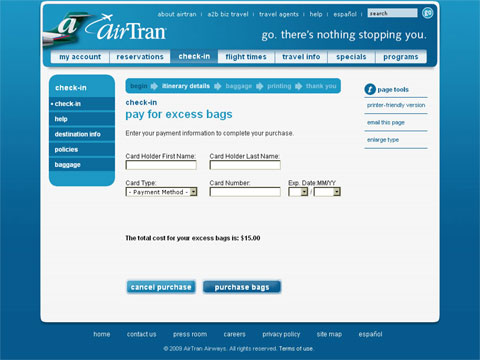New Address for Dunkirk Systems, LLC
Dunkirk has a new mailing address. Effective immediately, post mail and packages can be sent to:
Dunkirk Systems, LLC
17 E. Monroe St., Suite 120
Chicago, IL 60603-5608 US
Our phone number remains the same, as does our Web site and email addresses.
 You may be wondering why the immediate change. As many entrepreneurial companies do, Dunkirk has had its mailing address at a UPS Store. This has worked very well for us for over 3 years. But after a change in management, service went downhill at an accelerated rate that it effected the level of business at the store, and we just got informed it is shutting down next week! Fortunately we had an option, and have a new mailing address at a different UPS Store, one with a different franchisee and one that comes on high recommendation from customers.
You may be wondering why the immediate change. As many entrepreneurial companies do, Dunkirk has had its mailing address at a UPS Store. This has worked very well for us for over 3 years. But after a change in management, service went downhill at an accelerated rate that it effected the level of business at the store, and we just got informed it is shutting down next week! Fortunately we had an option, and have a new mailing address at a different UPS Store, one with a different franchisee and one that comes on high recommendation from customers.
Now it’s back to changing our address everywhere…
Did you enjoy reading this? You are welcome to subscribe to The Hot Iron by RSS feed or by email.
AirTran Web Site Adds Insult To Injury On Bag Fees
Ah, the days when you didn’t have to pay extra to check bags onto a flight. Just about every US carrier, with the notable exception of Southwest, now charges for checking the 1st 2 bags onto your flight. Where you can pay the bag fee at the airport when you check-in, some airlines have integrated payment into their online check-in process. One such airline is AirTran. In their case, they simply hacked existing Web functionality to do so, and along the way insulted me for checking a bag onto my flight.
As I checked in for my most recent flight online, I was prompted to select the number of bags I was to check. I selected 1, and clicked the button to continue. On the next page, I was surprised to see the Web page title – pay for excess bags – as you can see below.

The following image is a crop of the page title.

What? This is not an excess bag, it is my only bag! As someone who builds Web sites, I know why this is the way it is and what their developers did. They simply changed the threshold value for what is an “excess” number of bags from 3 to 1 – remember, AirTran and other airlines used to allow you to bring your 1st 2 bags for no additional charge. Where the functionality works fine, by not changing the words on the Web page, AirTran is being misleading, not to mention snarky. And it doesn’t end with the page title – look at the label of the submit button, which I have cropped below.

As you can see, it is labeled “purchase bags.” I am not acquiring a new bag, I am paying a fee, and one which to begin with I don’t want to. Please don’t sugar-coat the messaging, as it would be better to simply label the button as “submit” or “continue” rather than to attempt to be creative.
I fault this with the AirTran Web site product manager or whoever in their marketing department is the business owner of the Web site. Don’t blame the techies here, as it functions correctly, and that’s probably all they care about.
This is a good example of not knowing about what your customers look at everyday. Print out all of the pages of the Web site and put them on posterboard if need be, so that when a change is required, the function as well as the form are in sync.
Did you enjoy reading this? You are welcome to subscribe to The Hot Iron by RSS feed or by email.
Redmug.com Domain Name For Sale By Bido.com Auction On September 16
 Here’s your opportunity to get a great domain name - redmug.com. I have decided to sell this domain name, and am using Bido.com, the social domain name auction service. You may recall a few weeks back I was a guest speaker during a domain name live auction. Now I will be sitting on the sidelines watching as redmug.com goes on the auction block.
Here’s your opportunity to get a great domain name - redmug.com. I have decided to sell this domain name, and am using Bido.com, the social domain name auction service. You may recall a few weeks back I was a guest speaker during a domain name live auction. Now I will be sitting on the sidelines watching as redmug.com goes on the auction block.
Redmug.com can have many uses. As pictures, it can refer to mugs that are red, or for a more general application to coffee or travel mugs. The word “red” in itself is very common on Internet-based businesses. Plus mug has other meanings, including your face.
There is no reserve for the auction of redmug.com , and the opening bud starts at US$28. The auction will be on Wednesday, September 16 at 2:00 pm ET, 1:00 pm CT. You must register with Bido to participate in the auction. Even if you’re just interested in watching it, the Bido site has some unique features, like the 2-step, secure login process, which rivals ING Direct, in my humble opinion.
See you at Bido on September 16, and bid early and often on redmug.com!
Did you enjoy reading this? You are welcome to subscribe to The Hot Iron by RSS feed or by email.
Next likemind Chicago on Friday September 18
 The next likemind will be Friday, September 18, 2009 in dozens of cities around the world.
The next likemind will be Friday, September 18, 2009 in dozens of cities around the world.
In Chicago, it will be at Argo Tea, 140 S Dearborn St. at the corner of Adams and Dearborn Streets in the Loop from 8:00 am to 10:00 am.
I call likemind a gathering of creative-minded people, from various disciplines including Internet, advertising, art, social media, et. al. For more information on likemind, you can read this great article on likemind from the New York Times.
No RSVP is required. You are also welcome to join the likemind Chicago Facebook group.
Did you enjoy reading this? You are welcome to subscribe to The Hot Iron by RSS feed or by email.
Why Consistency Is So Important to Branding
Editor’s Note - The following is a guest post by Emily Brackett, President of Visible Logic, Inc. a Portland, Maine-based graphic design firm that works with start-ups and growing businesses to help them build compelling and comprehensive brands across media. A longtime reader of The Hot Iron and strategic partner of Dunkirk Systems, LLC, Emily shares some of her wisdom and experience here, which we hope will be the first of many guest posts from her.
 As a business owner, you probably have the usual elements of your corporate identity: business name, logo or wordmark, business cards and a Web site. However, as you grow your business, your identity can either be strengthened by consistent branding, or dilluted by irregular use of these elements.
As a business owner, you probably have the usual elements of your corporate identity: business name, logo or wordmark, business cards and a Web site. However, as you grow your business, your identity can either be strengthened by consistent branding, or dilluted by irregular use of these elements.
There are several common reasons why business owners are not consistent in their branding.
The first is that no one is in charge of watching the brand. Many times our brand identity is being added to, molded, and stretched without anyone giving it much thought. Someone should be ensuring that logo usage and graphic elements are consistent from one piece to the next and from one media to another. For a small business, this may be the business owners, or an internal marketing person. If you work with outside designers, Web developers or even a print shop who does some design/typesetting for you, make sure you instruct them on how to use your identity correctly and uniformly.
Another reason why many businesses have so little cohesiveness in their image is that they try new things too often. You may be tired of seeing the same colors and similar layouts, but your customers (or potential customers) may just be starting to grasp your unique identity. Keep with it and the payoff will arrive.
Why is consistency important?
Avoid confusion
The most obvious reason to be consistent with your brand identity is that you don't want to confuse potential clients and customers. Make it easy for someone to remember you. Frequently, people notice certain elements, but not all the details.
For example, you meet a potential client at a networking event and give her your business card which features a large, red, circular logo. A few weeks later, that person is thinking she may need your services so they Google your name and browse to your Web site. If she sees a large, red, circular logo she feels confident that she’s at the right place. If, on the other hand, your Web site shows your logo (even the same graphic) in green, she may feel confused and question whether this is indeed the same person and company she had met previously.
People trust things that they know
The first example highlights the most basic type of confusion that can cost you sales. But often it is more subtle than that. Every time a potential client hears your business name or sees your logo it gets registered, even slightly, in their memory. The stronger the bank of memories - and therefore the connection - someone has to a brand, the more likely they are to buy from that brand. Consumers choose brands that are familiar, because they seem known, established, and therefore trustworthy.
It makes business sense - increase your returns
Unfortunately, many business owners make their brand inconsistent without giving it much thought. One example is an entrepreneur who hires a Web development firm to create their Web site and another design studio for their printed work, without coordinating the two. You’ve paid for two projects but rather than having those two pieces compounding your brand and building them exponentially, you may end up with two unmatched marketing tools. Therefore, the two pieces are not as effective in building brand recognition as one coordinated effort.
How to build consistency:
- Use the same business name, logo, and/or logotype. Typeset the name and other elements, such as a tagline in a fixed fashion. Whether you do this yourself or work with an experienced graphic designer, once the logo or wordmark is done, don't change it.
- If you’ve hired a designer to develop your logo or wordmark, make sure you receive electronic files that you can work with. You and your staff should use these graphics in all letters, memos, proposals, etc. Do not retype or tinker with the logo, and do not allow your staff or agencies to do so either.
- Choose a corporate color, or color palette and use them as the dominant color scheme throughout your materials - printed or online. If you’ve worked with a professional designer for your logo, make sure you’ve received your pantone (PMS) color numbers as well as CMYK and RGB equivalents. Whether you create something yourself in PowerPoint or work with a graphic designer, always use those same colors.
- Think across media. Ensure there are design elements that are similar across all of your materials. From business card to Web site to advertisement to educational brochure, there should be a recognizable look and feel.
- If you worked with a professional designer, have them write up some easy-to-follow guidelines and have them create templates for you. These might include a letterhead template in Word and a PowerPoint template for your presentations.
Did you enjoy reading this? You are welcome to subscribe to The Hot Iron by RSS feed or by email.

